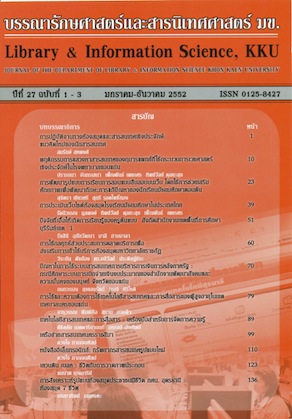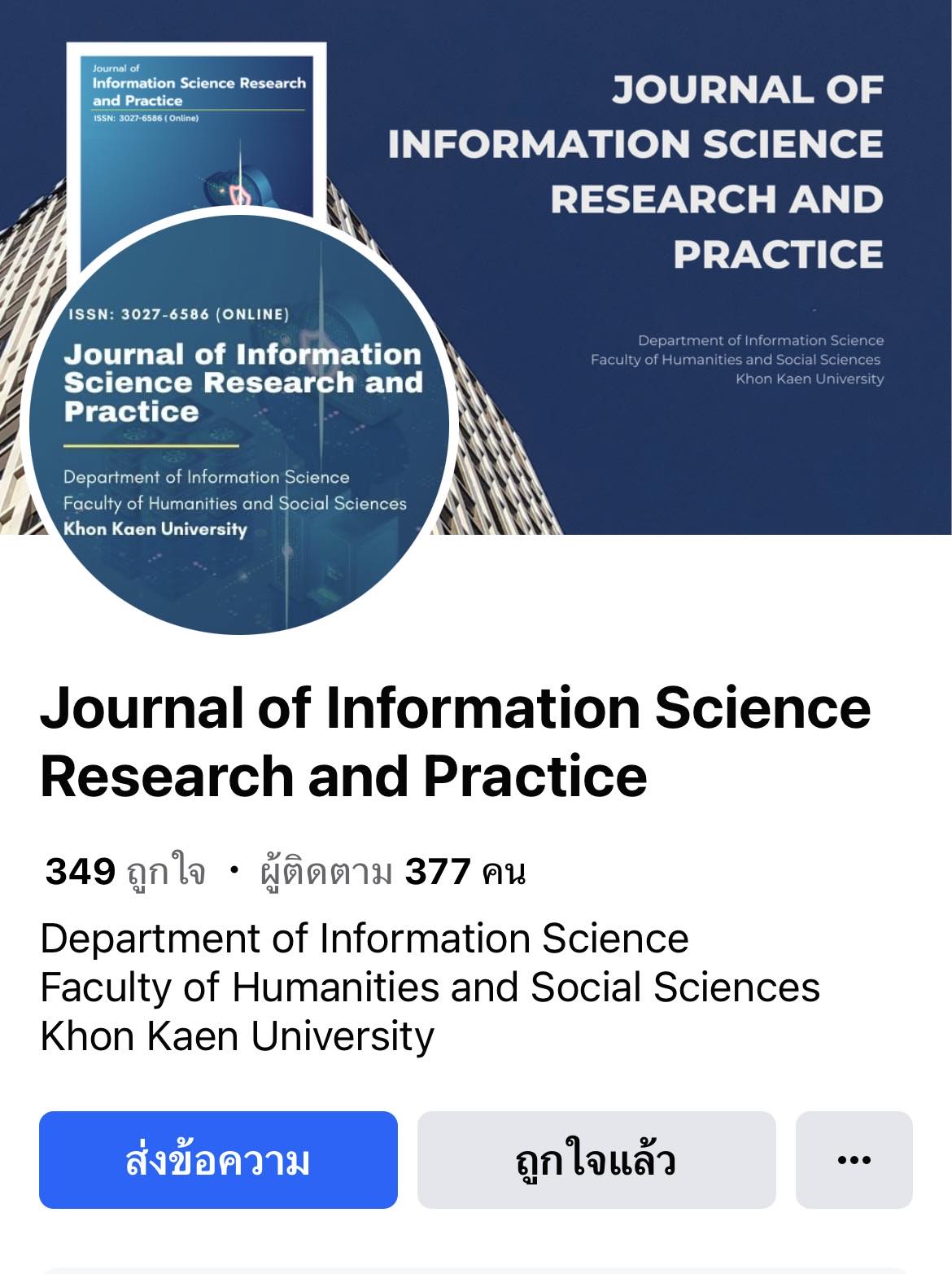การพัฒนารูปแบบการเรียนการสอนแบบสืบสอบบนเว็บ โดยใช้การช่วยเสริมศักยภาพเพื่อพัฒนาทักษะการแก้ปัญหาของนักเรียนมัธยมศึกษาตอนต้น
Keywords:
การช่วยเสริมศักยภาพ, การสืบสอบบนเว็บ, การแก้ปัญหา, Scaffolding, Web-based Inquiry, Problem SolvingAbstract
บทคัดย่อ
การวิิจัยนี้เพื่อพัฒนารูปแบบการเรียนการสอนแบบสืบสอบบนเว็บ โดยใช้การช่วยเสริมศักยภาพเพื่อพัฒนาทักษะการแก้ปัญหาของนักเรียนมัธยมศึกษาตอนต้น แบ่งการวิจัยออกเป็น 3 ระยะ คือ ระยะที่ 1 การพัฒนารูปแบบการเรียนการสอน โดยการวิเคราะห์และสังเคราะห์เอกสารและการศึกษาความคิดเห้นของผู้ทรงคุณวุฒิ จำนวน 22 ท่าน โดยใช้เทคนิคเดลฟาย แบบปรับปรุง ระยะที่ 2 การทดสอบประสิทธิภาพของรูปแบบที่พัฒนาขึ้น โดยนำรูปแบบการเรียนการสอนที่พัฒนาขึ้นไปทดลองใช้กับกลุ่มตัวอย่าง ซึ่งเป็นนักเรียนชั้นมัธยมศึกษาปีที่ 3 จำนวน 25 คน และเปรียบเทียบความแตกต่างของทักษะการแ้ปัญหาก่อนและหลังเรียนโดยใช้ t-test และระยะที่ 3 การนำเสนอรูปแบบการเรียนการสอนแบบสืบสอบบนเว็บ ผลการวิจัยพบว่า องค์ประกอบของรูปแบบการเรียนการสอนที่พัฒนาขึ้นประกอบด้วย 1) หลักการ 2) วัตถุประสงค์ 3) กระบวนการเรียนการสอน และ 4) การวัดและประเมินผลการเรียนรู้ กระบวนการเรีนการสอนแบ่งออกเป็น 2 ขั้นตอน คือ 1) ขั้นเตรียม 2) ขั้นการเรียนการสอนแบบสืบสอบ การวัดและประเมินผลการเรียนรู้ใช้การวัดและประเมินผลตามสภาพจริง ส่วนผลการทดลองใช้รูปแบบที่พัฒนาขึ้นพบว่า นักเรียนมีทักษะการแก้ปัญหาหลังการทดลองสูงกว่าก่อนการทดลองอย่างมีนัยสำคัญที่ระดับ .05 และผู้ทรงคุณวุฒิด้านเทคโนโลยีการศึกษา จำนวน 6 ท่าน มีความเห็นว่า รูปแบบที่พัฒนาขึ้นมีความเหมาะสมและสามารถนำไปใช้กับนักเรียนระดับมัธยมศึกษาตอนต้นได้
คำสำคัญ : การช่วยเสริมศักยภาพ; การสืบสอบบนเว็บ; การแก้ปัญหา
Abstract
The purposes of this research were to develop a scaffolding web-based inquiry model to develop problem solving skills of lower secondary school students. The research procedure was divided into three phases. The first phase was the development of a scaffolding web-based inquiry model by analyzing and synthesizing related documents. Modified Delphi technique was used to survey twenty-two experts’ opinion on the developed model. The second phase was the evaluation of the effectiveness of the developed model by implementing the model with 25 Mathayomsuksa three students. The problem solving skills of the subjects were assessed before and after the experiment. A dependent t-test was used to compare pretest and posttest results. The third phase was the verification of the developed model by the experts. The research findings were as follows: The scaffolding web- based inquiry model consisted of principles, objective, instructional process, and evaluation. The instructional process was divided into two stages : 1) preparation stage and 2) inquiry learning stage. The learning evaluation was authentic assessment. The analysis of pre-test and post-test scores of the subjects showed a significant improvement of problem solving skills at .05 level. The comment from six experts on educational technology has confirmed that the model was effective and suitable for lower secondary school students.
Keywords: Scaffolding; Web-based Inquiry; Problem Solving








